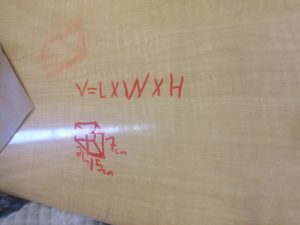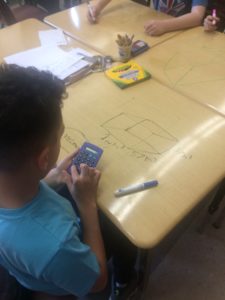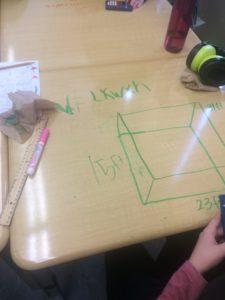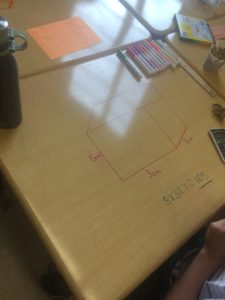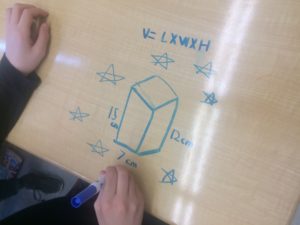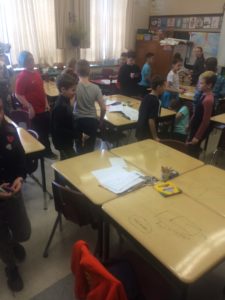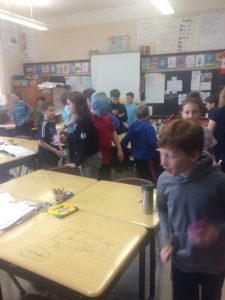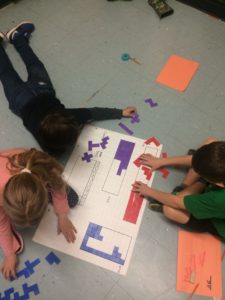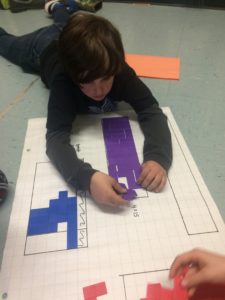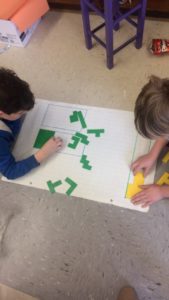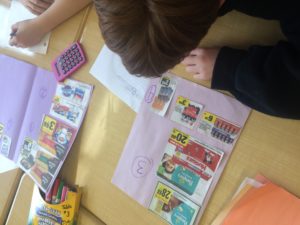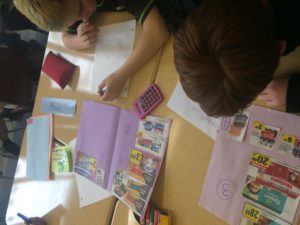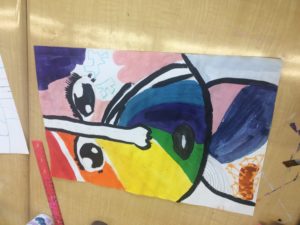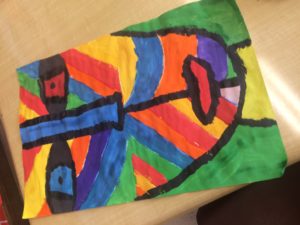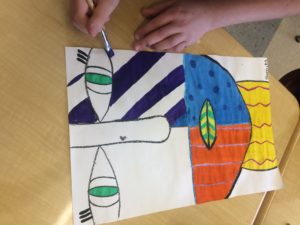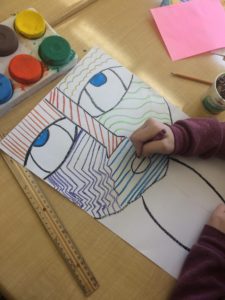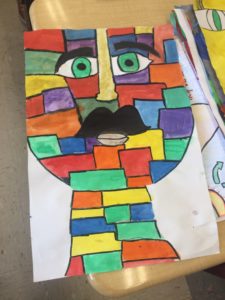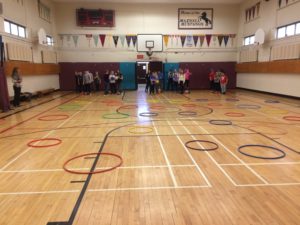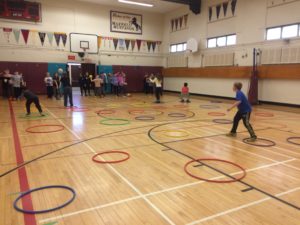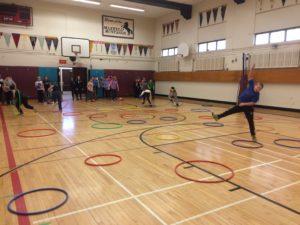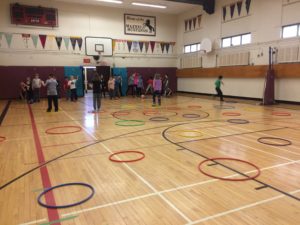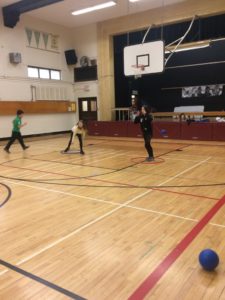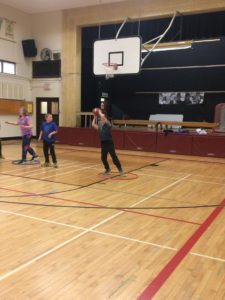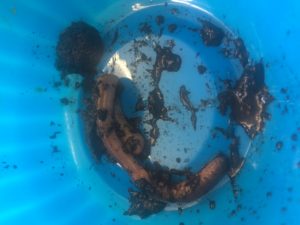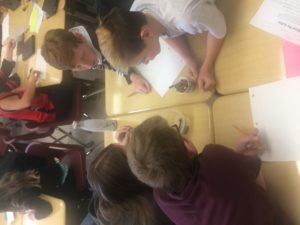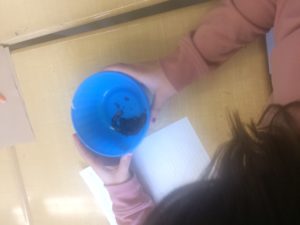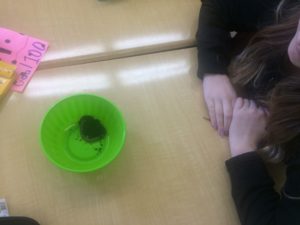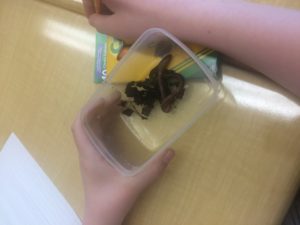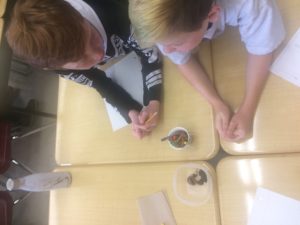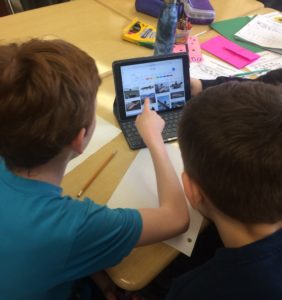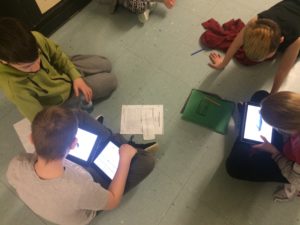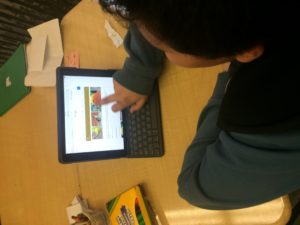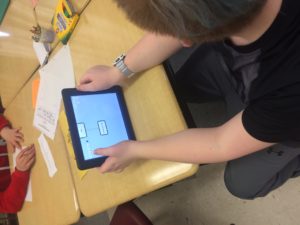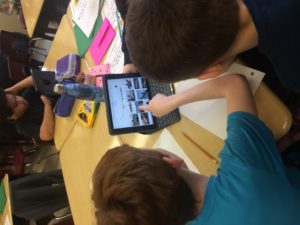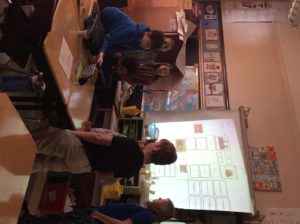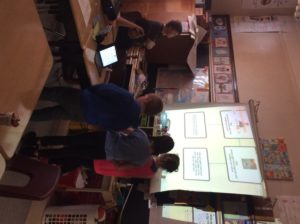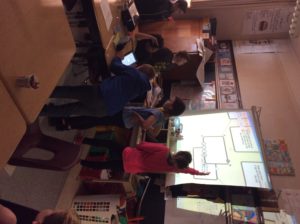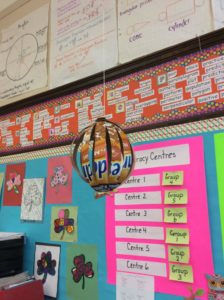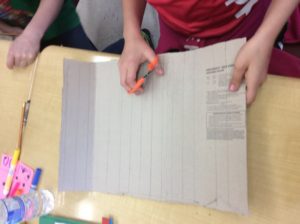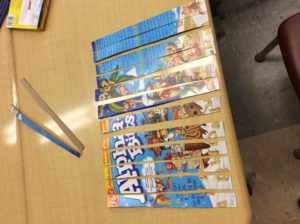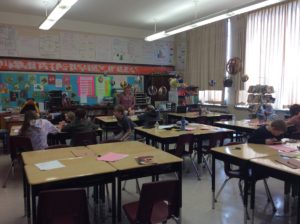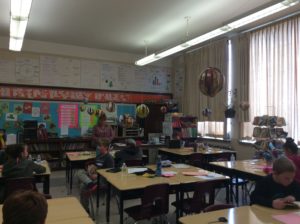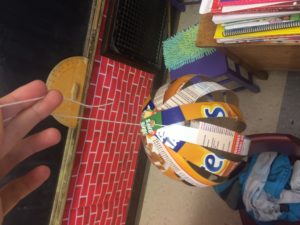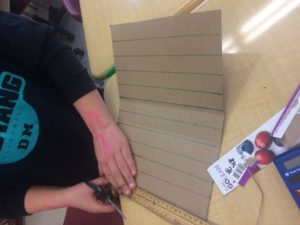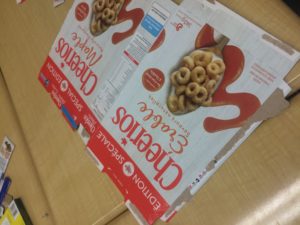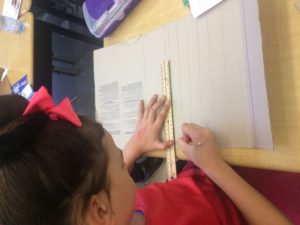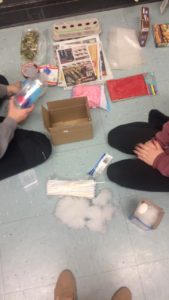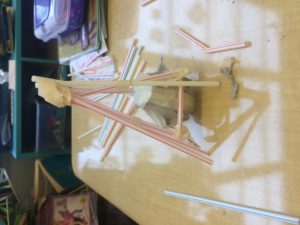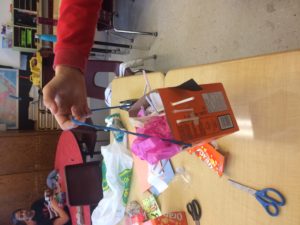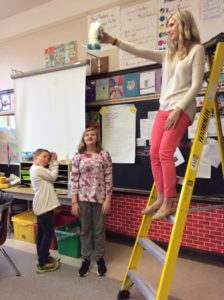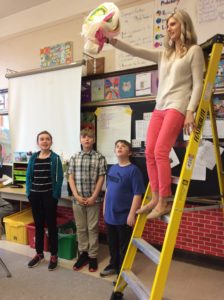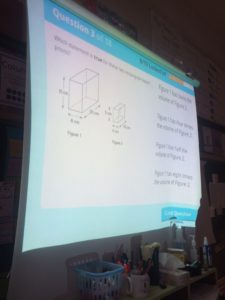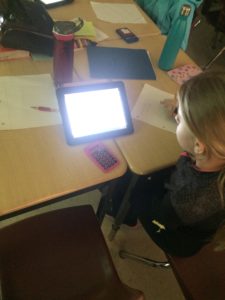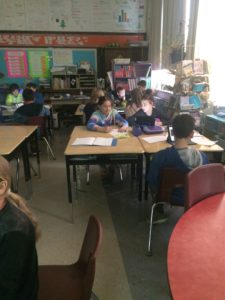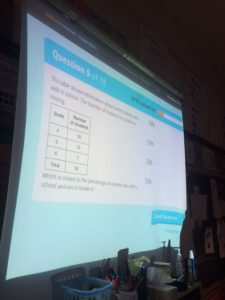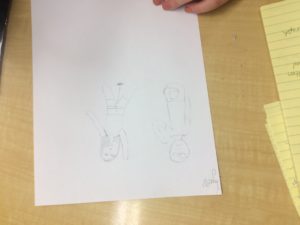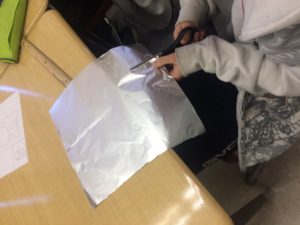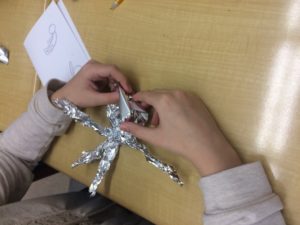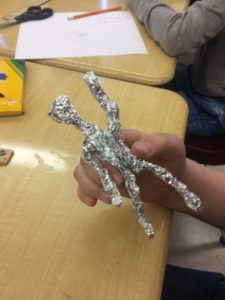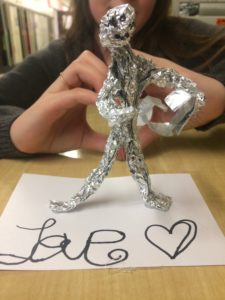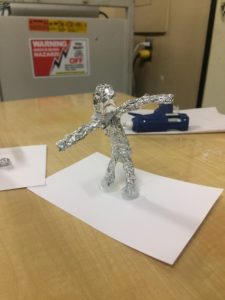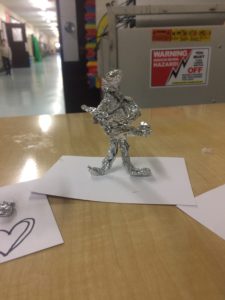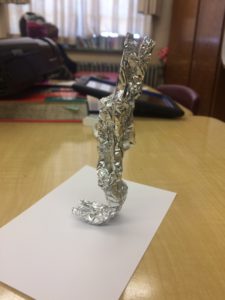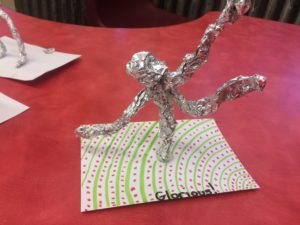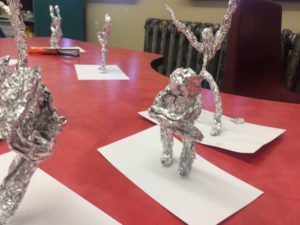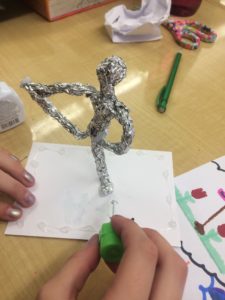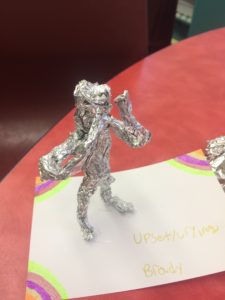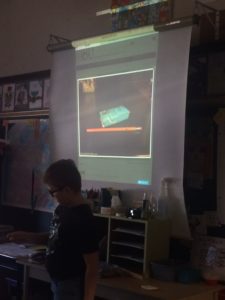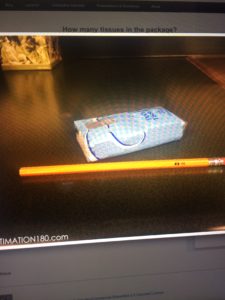Vertical Non-Permanent Surfaces (VNPS) allows students to decrease a fear in writing math, because it can be easily erased. Students became very interested and excited when I told them to create a rectangular prism and put dimensions around the figure for their peers to solve, using an erasable marker on their desk. They excitedly wrote a problem out and walked around the room looking at the potential questions they can solve. Once I rang a bell they jumped into the closest seat and began solving the question!
Math Centres
Math centres are a great way to monitor small groups of students engaging in a task. It allows time for observation to see if students require further assistance in a certain area. It also fosters and builds upon collaboration with their peers. The photos above show two different types of math centres. The first centre is a spatial awareness activity that challenges students to fit all of their pentominoes in a rectangle. This activity is created to improve spatial sense by challenging students and causing cognitive dissonance. This activity is a huge hit and students often find them self back at this centre when they have extra time.
The second centre in the set of photos are grocery ad comparisons. They are required to find which store has the best prices for the same product. Students have been working on rate in class. This activity allows students to make connections to real life, they can see that this type of math strand is relevant to their lives in certain ways like buying products at stores. This math translates to parts of their lives, as students came up to me saying that they were calculating rate while grocery shopping with their parents.
Abstract Faces
Perfect Toss
This physical education game allows students to work on their overhand and underhand throws. Students line up in groups of 5. The first student must step inside a hula hoop. The second student must throw any ball they choose to the student in the hula hoop. If the student catches the ball, then he/she brings the hula hoop back to their team!
Biodiversity
My students were learning about Biodiversity. We had just talked about why we classify and continued our conversation through a group activity. Students got into groups of 4-5 and were given a category under vertebrate and had to choose 2 animals to compare and classify on popplet. For example, one group got the category Mammals and classified Humans and Gorillas. Following this, they presented to the class about their vertebrates and why they decided to classify it the way they did, along with the information they found. After this, we looked at an invertebrate- worms! They watched the movement of the worm and concluded that there are 7 characteristics of a living thing. The students were able to brainstorm as a whole group what the characteristics could be!
Earth Day Globes
When I began my placement, I announced to my students to start collecting empty cereal boxes. During my second last week of placement, we reused cereal boxes to make Earth Day globes. This was such a great activity because students could see how reusing recyclable materials can foster creativity. This activity also encouraged the importance to reuse materials to help the Earth by reducing materials in landfills. The Earth day globes turned out so beautiful!
Egg Drop Challenge
The Egg Drop Challenge is a fantastic STEM activity! Students got in groups of 2-3 and and brainstormed at the beginning of the week what their contraption will look like. They collaborated with their group the materials they needed and coordinated who would bring what. By the end of the week, the room was filled with recycled materials students gathered from their homes. It was a very busy day as students created and tested their contraptions until they felt confident they were ready for their egg to be dropped. My associate teacher and I brought in a large ladder and I stood on the stairs and gradually made my way to the top and dropped the egg at the highest point. Following this activity we talked about what worked and why. We also talked about what didn’t work and how we can improve next time.
Knowledgehook
These grade 6 students used Knowledgehook to practice math EQAO questions from previous years. It is a great tool for students to use technology to show their work, discuss the problem, and collaborate with their classmates. I really like this resource because it allows students to discuss how they got their answer and where they made mistakes. Student voice is appreciated with this resource, as they have the opportunity to discuss their work.
Sculpture Art
This tinfoil sculpture art required students to explore their emotions while listening to music. I played two different songs that evoked different emotions. Students were required to sketch out their emotions in a faceless figure. The way the body was positioned should give the person observing the sculpture what emotion it is displaying. Following the sketch aspect of the project, students were given a piece of tinfoil that measured 30cm x 30cm. They measured 12cm with a ruler and drew three marks on the tinfoil where students would cut their sheet for the legs, arms, head, and torso. After cutting their piece of tinfoil, they started to slowly fold the pieces to create the arms, legs, head, and torso. The sculptures turned out amazing, and truly depicted emotions that they felt while listening to music.
Estimation 180
For the past 2 weeks, students in 6K have been starting their mornings with an eye opener. They are required to observe the image on the screen and create an estimate based on the information they are provided with. This is a good opportunity for students to collaborate with their peers while developing strategies to estimate. The website Estimation 180 is a fantastic resource for students to improve and test their estimation skills.
